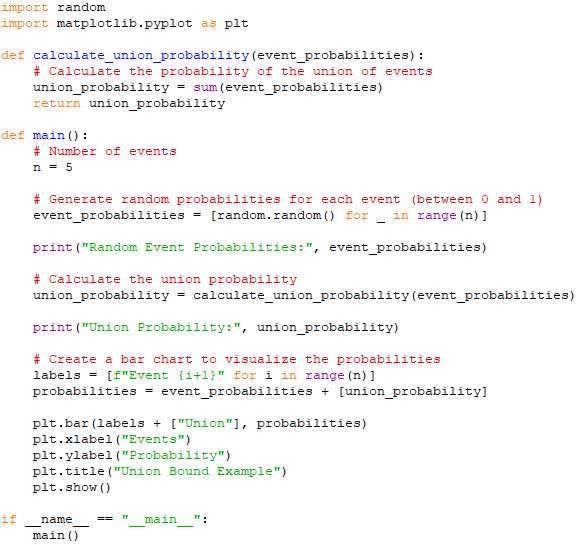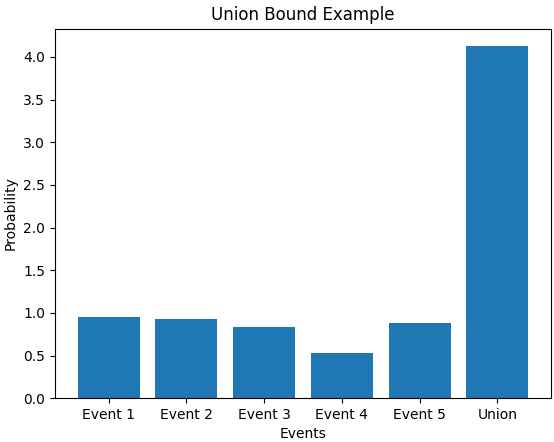Union Bound/Boole's Inequality
- Python for Integrated Circuits - - An Online Book - |
||||||||
| Python for Integrated Circuits http://www.globalsino.com/ICs/ | ||||||||
| Chapter/Index: Introduction | A | B | C | D | E | F | G | H | I | J | K | L | M | N | O | P | Q | R | S | T | U | V | W | X | Y | Z | Appendix | ||||||||
================================================================================= Union Bound or Boole's Inequality is a way to establish an upper bound on the probability of the union of multiple events. Mathematically, the Union Bound can be expressed as follows: Let E₁, E₂, ..., Eₙ be a collection of n events. Then: P(E₁ ∪ E₂ ∪ ... ∪ Eₙ) ≤ P(E₁) + P(E₂) + ... + P(Eₙ) -------------------------------------- [3940] In this inequality, "P" represents the probability of an event, and "E₁ ∪ E₂ ∪ ... ∪ Eₙ" represents the union of these events, which means at least one of them occurring. The Union Bound is a useful tool in probability theory and statistics for bounding the probability of rare events. It's often used in the analysis of error probabilities, such as in the context of bounding the error rate of a communication system or the probability of false positives in hypothesis testing. Therefore, when someone mentions "the probability of E₁, E₂, ..., Eₙ is equal to or less than the sum of the probability of each one," they are essentially referring to the Union Bound, which provides an upper bound on the probability of the union of multiple events. It's named "union bound" because it deals with the union (combination) of events and provides a bound on the probability associated with this union. The Union Bound concept, which provides an upper bound on the probability of the union of multiple events, has applications in various aspects of machine learning and statistical learning theory. Here are some areas where the Union Bound is relevant:
In all these applications, the Union Bound is a valuable tool for assessing and bounding probabilities, especially when dealing with multiple events or when the exact probabilities are difficult to compute. It helps in understanding the overall risk or error associated with a system or a machine learning model. ============================================ Union Bound. Code: ============================================
|
||||||||
| ================================================================================= | ||||||||
|
|
||||||||


